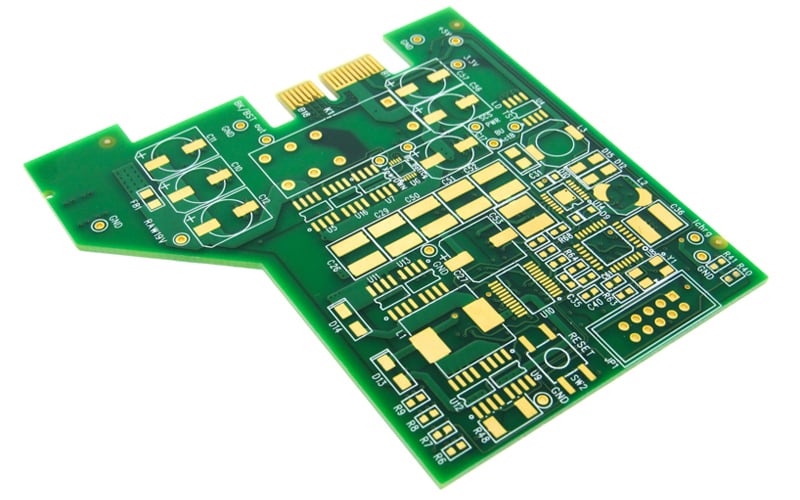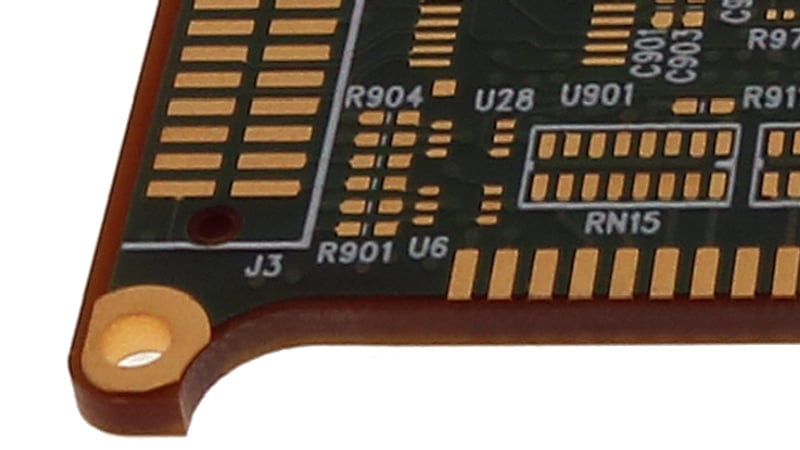Navigating the world of printed circuit boards (PCBs) can be complex, especially when it comes to pricing. Unlike off-the-shelf products, PCBs are custom-engineered, each having unique specifications and functionalities. Understanding how these specifications contribute to the overall cost is crucial for effective planning and decision-making.
In this blog post, we will dive into the intricate details of the base cost factors and the additional considerations that affect PCB pricing.
The Cornerstones of Base Cost
Layer Count: The Foundation of Complexity
Layer count primarily defines the circuit board's complexity, and each layer comprises copper traces that facilitate electrical connections. The higher the layer count, the more complex the PCB, and thus, the higher the cost. Note that the count excludes non-copper layers such as solder masks or silkscreens.
Dimensions: The Geometric Factor
Dimensions, represented by length (X) and width (Y), are crucial in PCB manufacturing for several reasons:
- Material Utilization: Efficiently sized boards minimize waste and costs, while irregular shapes may result in leftover material and increased expenses.
- Cutting Complexity: Irregular shapes often require specialized cutting tools and techniques, driving up manufacturing costs.
- Panelization Impact: The circuit board dimensions influence how many boards can fit on a single panel, affecting material utilization and assembly efficiency.
- Downstream Effects: Circuit board size impacts other manufacturing processes like soldering and testing, indirectly influencing the total cost.
- Structural Concerns: Larger or irregularly shaped boards may need additional reinforcements, adding to the overall expense.

Printed circuit boards with irregular shapes could drive up manufacturing costs.
Material: The Substance of the Board
The choice of material is a critical element that significantly influences both the pricing and performance of a PCB. FR4 is commonly used for its balance of cost and quality, but even within this standard material, variations in copper weight can alter the price.
For specialized needs such as high-frequency or high-temperature applications, premium materials like Rogers or Isola may be required, generally increasing the overall cost. Additionally, the thickness of the copper layers in the board can further affect the cost and electrical performance. While FR4 may suffice for many standard applications, unique requirements can escalate costs due to specialized materials and higher copper weights. It's crucial to align the material choice with your project's specific needs to ensure cost-effectiveness.
Overall Thickness: Not Just Skin Deep
The overall thickness of a PCB is a critical factor that goes beyond mere dimensions, influencing both performance and cost. The thickness can be measured in different ways, depending on your project's specific needs. In some instances, the thickness may only account for the exposed metals, particularly in designs where board height or mechanical constraints are critical. Alternatively, the measurement may include solder masks and metal plating, especially in scenarios where the board faces environmental stress or stringent electrical requirements.

Example of a thick circuit board.
The method used for measuring thickness affects material costs and manufacturing processes such as drilling and etching. For example, a thicker board would likely require more material and longer drilling times, ultimately impacting the overall cost. Therefore, it's crucial to define the overall thickness appropriately to meet your project’s goals without inflating expenses.
Classification: The Compliance Norms
The classification of a PCB plays a critical role in setting both the quality standards and cost expectations for your project. Terms like Class II and Class III are not just designations; they dictate the level of scrutiny and quality assurance your board will undergo during manufacturing. For example, Class III is generally reserved for boards that require high reliability in critical systems, and as a result, they typically come with higher manufacturing costs.
Similarly, designations like ITAR (International Traffic in Arms Regulations), domestic, military, and medical aren't merely labels but are indicative of the regulatory frameworks the PCB must conform to. An ITAR-compliant circuit board, for instance, has to meet strict U.S. export laws, affecting not just the material choices but also the entire supply chain, thereby adding to the overall cost. Domestic classifications may emphasize locally sourced materials, affecting availability and possibly increasing costs. Medical and military classifications require adherence to stringent quality controls and often necessitate special certifications for the manufacturing facility itself.
In essence, the classification you choose sets the compliance norms, quality benchmarks, and consequently, the base cost of your PCB. Therefore, it's vital to select the most appropriate classification that aligns with your project requirements and budget constraints.
Surface Finish: The Final Touch
The type of surface finish you choose for your PCB serves as more than just an aesthetic element; it significantly impacts both the performance and the cost of the board. Traditional finishes like Hot Air Solder Leveling (HASL) have long been industry staples, but as technology evolves, more specialized finishes such as immersion gold or immersion silver are gaining popularity, particularly for high-frequency or high-reliability applications.
RoHS-compliant finishes, designed to be free of hazardous substances like lead, are increasingly becoming the norm, especially in markets where environmental regulations are strict. These finishes often cost more due to the materials used and the more complicated deposition processes they entail.
Additionally, the surface finish can affect the board's ability to withstand environmental factors like humidity or its suitability for specific assembly techniques like reflow soldering. Therefore, your choice of surface finish should not only align with your project's performance requirements but also be considered as part of your overall budget, as it can significantly influence the final cost.
Secondary Elements: Cost Adders
- Copper Weight Variations: An increasing trend in the industry is the demand for PCBs with copper weights above two ounces. The greater the copper weight, the higher the electrical capacity, but this comes at a cost premium.
- Order Quantity: The quantity you order affects the unit cost—larger orders often have a lower unit cost due to economies of scale.
- Impedance Control: The need for controlled impedance in high-speed circuits adds another layer of complexity, requiring the use of specialized materials and production methods to meet the specifications.
- RoHS and Environmental Compliance: Compliance with RoHS (Removal of Hazardous Substances) often involves replacing lead-based finishes with alternatives like immersion gold or silver, which are more expensive.
- High-Temperature Materials: Materials with high thermal stability (greater than 130 Tg) are increasingly being requested, but these specialized materials are often more expensive.
- Brand-Specific Requirements: Some designs may call for materials from specific brands like Isola, Rogers, or Nelco. These can often be more expensive than generic equivalents.
- IPC Specifications for Material Selection: IPC-4101 and IPC-4103 are standards that can facilitate cross-referencing materials, allowing suppliers greater flexibility in sourcing compliant materials, often at a more competitive price.
- Evolving Market Alternatives: Traditionally, Rogers has been a key player in providing high-speed materials, but brands like Isola are entering the space with more cost-effective and readily available options.
Summary
For a comprehensive pricing estimate, the minimum you’ll need to provide are the dimensions, overall thickness, layer count, materials, copper weights, and the type of surface finish. Beyond that, specific requirements like impedance control, high copper weights, and high-temperature materials are also factored in.
Understanding each of these elements in depth can yield not only a more accurate estimate but also offer opportunities for cost optimization. It also sets the stage for better dialogue between you and your PCB supplier, ensuring a more streamlined and effective project execution.
Key Takeaways
- Layer count drives complexity and cost: Each additional copper layer increases manufacturing difficulty and price, with multilayer builds costing significantly more than simple 2-layer designs.
- Board dimensions and shape impact material use and panelization: Irregular or oversized PCBs create more scrap, require specialized cutting, and reduce panel efficiency, all of which raise costs.
- Material selection is critical: While FR4 is standard, specialized high-frequency or high-temperature materials (like Rogers or Isola) and heavier copper weights substantially increase cost.
- Classification and compliance add expense: Circuit boards built to Class III, ITAR, military, or medical standards demand tighter controls, certifications, and higher-quality assurance, raising base costs.
- Surface finish and secondary features are major cost adders: Advanced finishes (ENIG, immersion silver, RoHS-compliant coatings), impedance control, thicker copper, and extra drilling/routing steps all contribute to higher pricing beyond the base build.
















